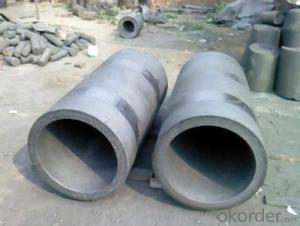When you think about the heart of an electric arc furnace (EAF), what comes to mind? For many, it’s the bright, intense light that emanates from the furnace, symbolizing the power and energy at work. But if you’re a metallurgist, an engineer, or simply someone with a keen interest in the world of steel production, you might think of something else entirely: the graphite electrodes. These unsung heroes are the lifeblood of the EAF, and their importance cannot be overstated.
Let’s dive into the world of graphite electrodes, shall we? Imagine, for a moment, that you’re standing in front of an EAF. The heat is intense, the air crackles with energy, and the graphite electrodes are the silent sentinels that maintain the furnace’s operation. They’re not just any graphite, though. They’re specially designed to withstand the harsh conditions inside the furnace, absorbing the heat and electrical current that drive the process of melting and refining steel.
Now, let’s talk about why graphite is the go-to material for these electrodes. It’s all about the properties that make it so special. Graphite is an allotrope of carbon, which means it’s made up of the same element as diamond, but in a different structural arrangement. And while it may not be as hard as its glittering cousin, it has its own unique set of advantages. Graphite is an excellent conductor of electricity, which is crucial for the EAF’s operation. It’s also resistant to heat and corrosion, allowing it to stand up to the extreme temperatures and chemical reactions that take place within the furnace.
But here’s where things get really interesting: the role of graphite electrodes in the EAF is not just passive. They’re actively involved in the process of steelmaking. As the electrodes arc and discharge, they generate the heat necessary to melt the scrap steel. This is where the magic happens, where the old is transformed into the new, and where the graphite electrodes play a starring role. Without them, the EAF would be nothing more than a dark, cold shell.
So, what happens when something goes wrong with the graphite electrodes? Well, let’s just say it’s not pretty. If they’re not up to the task, if they’re of poor quality or improperly maintained, the entire EAF process can be compromised. Efficiency drops, costs rise, and production delays become a regular occurrence. That’s why it’s crucial to choose the right graphite electrodes and to take proper care of them.
And speaking of taking care, let’s talk about maintenance. It’s not just about replacing worn-out electrodes. It’s about monitoring their performance, ensuring they’re in good condition, and making adjustments as needed. This is where the expertise of the operators and engineers comes into play. They need to have a deep understanding of the EAF and the graphite electrodes, to know when something is amiss and how to address it.
But let’s not forget about the environmental impact. The production of graphite electrodes has its own set of challenges, from the mining of raw materials to the manufacturing process itself. However, advancements in technology and a focus on sustainability are helping to mitigate these issues. Producers are looking for ways to reduce their environmental footprint, whether it’s through recycling materials, improving energy efficiency, or developing new methods of production.
In conclusion, the graphite electrodes are the unsung heroes of the EAF, the silent powerhouses that drive the process of steelmaking. They may not be the most glamorous part of the process, but their importance is undeniable. So, the next time you see an EAF in action, take a moment to appreciate the graphite electrodes and the vital role they play. They’re the reason the sparks fly and the steel flows.

